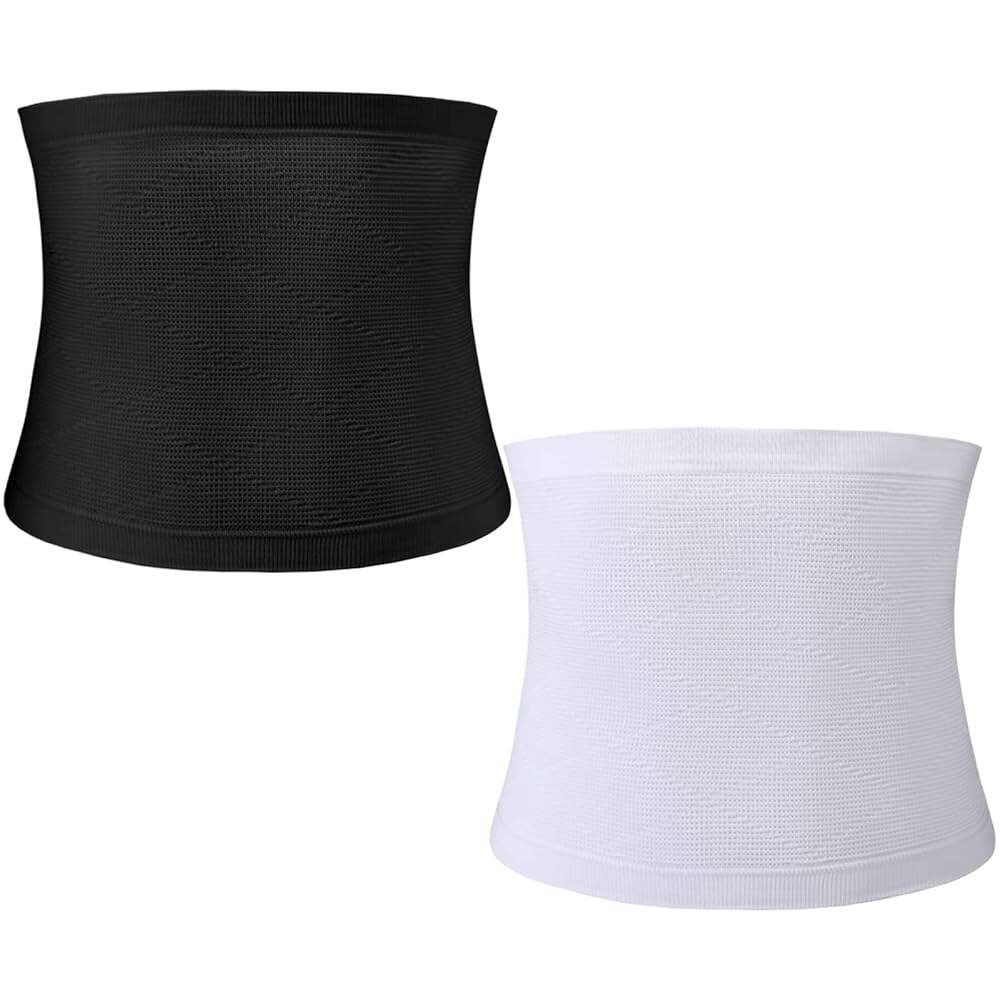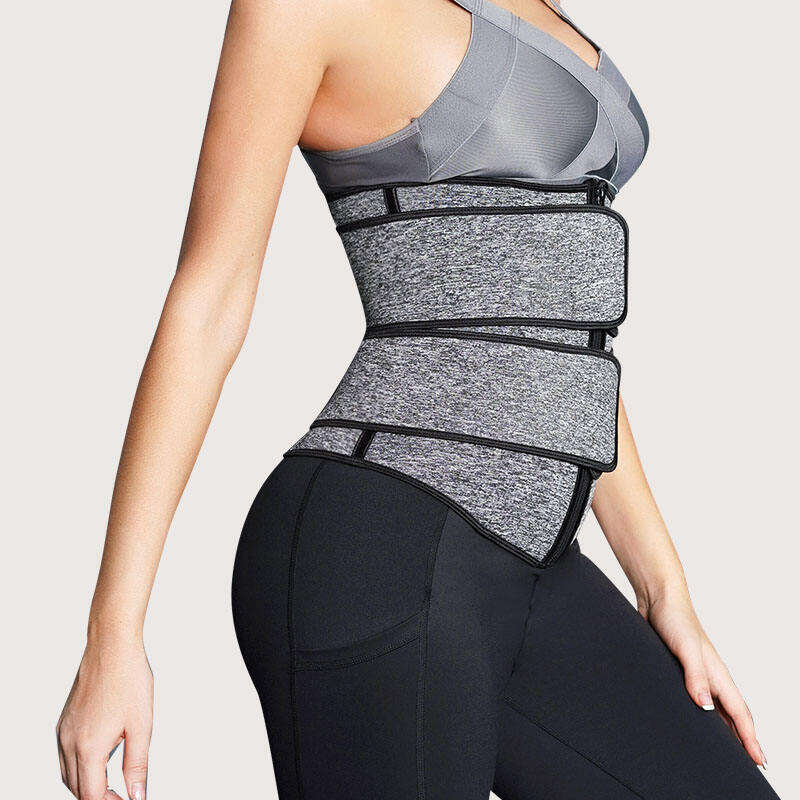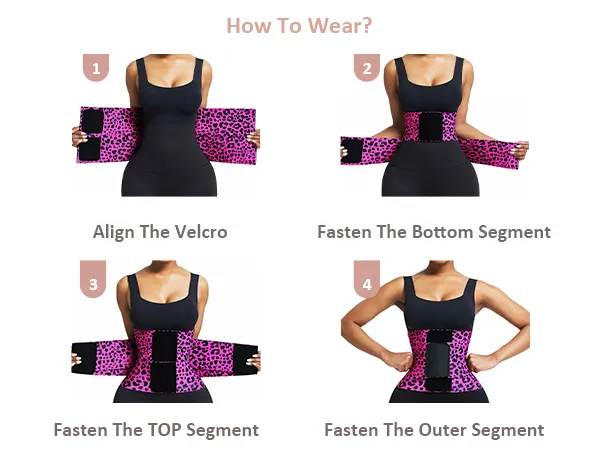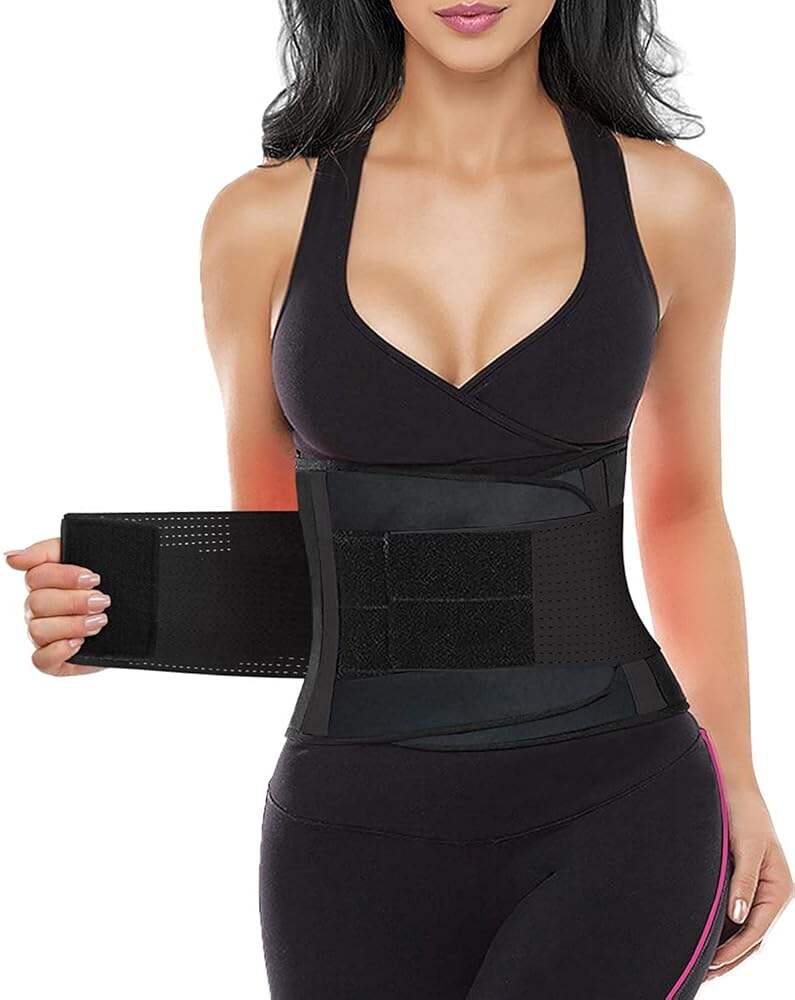מה אימוצי מותן עושים? יתרונות, סיכונים, איך הם עובדים, וחלופות אמיתיות
· פתיחה: מה אימוצי מותן עושים, באמת?
· תשובה קצרה: מה עושה אימוך מותן?
· מה הם אימוצי מותן? חומרים, תכונות, ומחיר
· איך אימוצי מותן עובדים? לחץ, חום, ואימוץ
· אימוצי מותן לעומת ידיות צורה לעומת סרטים לחית מול צינורות
· האם אימוצי מותן באמת עובדים לירידה במשקל או בשומן הבטן?
· טענות של אימוצי מותן לעומת עובדות
· האם אימוצי מותן בטוחים? סיכוני בריאות ותופעות לוואי
· כמה זמן כדאי ללבוש חגורת מותן?
· כדאי לעשות תרגילים עם חגורת מותן?
· חגורות מותן ועטיפות לאחר לידה: מה ההבדל?
· מדריך לקונה: בחירת חגורת המותן הטובה ביותר לגוף שלך
· איך להשתמש בחגורת מותן בבטחה (שלבי הפעלה)
· לפני ואחרי: דגשים ריאליים
· אלטרנטיבות בריאותיות וארוכות טווח ל entrenינג מותן
· מיתוסים ו팩טים על חגורות מותן
· שאלות נפוצות: האם חגורות מותן עובדות, ביטחון, מידות ואחר
· מסקנות: אז, מה בדיוק עוזרות חגורות מותניים?
מבוא: מה באמת עוזרות חגורות מותניים?
האם אתם מבולבלים בנוגע לפתרונות היעילים לחגורות ולבגדים צורפיים? או אולי תוהים האם חגורות באמת עוזרות בהפחתת שומן הבטן? אם כן, אינכם לבד. חגורות —בגדים מצמצמים עשויים ספנדקס, ניילון או לטックス, עם סגירות של קרסים וחורים, ריתומים, רוכסנים, ולקרא או גידים מפלסטיק או מפלדה — מעוצבים כדי ליצור דמות שעון חול, לצמצם את גודל המותניים, לתמוך בעמידה ולפעמים אף לשרוף שומן. בגדים קושרים שנועדו להדק את המותניים דומים לקורсетים מהתקופה הוויקטוריאנית או לבגדים צורפיים למותניים, ומשווקים כדרך מהירה להדק את המותניים מתחת לשמלה או לבוש לحدث מיוחד. אך חשוב להבחין בין שיווק לתוצאות אמיתיות: התופעות של רוב "החגורות" הן לעתים קרובות זמניות, ושימוש יתר עלול להגביר סיכונים, במיוחד לאלו עם בעיות בהעיכול, מחלות נשימתיות או רגישות עור. חגורות מותן מכווצות את רקמות הבשר הרכות של הבטן כדי ליצור אפקט זמני של צניעות, ומרפאות את המותן באינץ' עד שלושה אינצים'. לכן, חגורות מותן הן דרך מצוינת להיראות צנומות לישיבות מיוחדות או לאירועים אחרים. חגורות זיעה מניופרן וחגורות מצמיג יכולים גם ללכוד חום ולהגביר את הזיעה באזור המותן. זה עשוי להוביל לאובדן מים ולא לאובדן שומן, אך כל אובדן כנראה יחזור עם הידרציה. כל טענה על צניעות ממוקדת, עיצוב גוף קבוע או שריפת שומן משמעותית אמורה להוות אזהרה ללא ראיות מוצקות. לחיצה ממושכת על הבטן וחגורות קשיחות עשויות להוביל לצמצום נשימה, ירידה בקיבולת הריאות, בעיות במערכת העיכול (כגון גירעון או חום בطن), פצעים בעור או אדמומיות (במיוחד אצל אנשים עם אלרגיה לצמיג), סירקולציה לקויה או לחץ ואלגיזים על האיברים. אם כי שימוש מזדמן או קל בחגורה במהלך פעילות גופנית עשויה להניב יתרונות אסתטיים, שימוש יומיומי או ממושך עלול להפוך להרגל מסוכן ש menace את תפקוד הליבה והנוחות.
מְאַמְּצֵי מָתְנַיִם עֹשִׂים בִּדְרָגָה שֶׁבְּשָׁלוֹן מַרְגִּישִׁים צָרִים יוֹתֵר, אֲבָל לֹא יְבַטְּלוּ אֶת שְׁמַן הַבִּטְנִי, לֹא יְחַזְּקוּ אֶת הַשִּׁבְרִים אוֹ יְקַטְּנוּ בִּדְרָגָה אֶת הַקֶּרֶן. מֻלְוֶה לְהִשְׁתַּמֵּשׁ בָּהֶם בְּזִהִירוּת וּלְקַבְּלָם כְּגוּפָן אוֹפְסְטִיתִי וְלֹא כַּכְּלִי לְרִזּוּל אוֹ תְּרוּמַת כּוֹחַ; שִׁיטוֹת אַחֵרוֹת לְרִזּוּל, כְּגוֹן אֵימָצוֹת לְחִזּוּק הַשִּׁבְרִים (הַאֲמָצַת צַד הַגּוּף, אִימּוּץ הַכֶּלֶב, סְבִיבוֹת רֻסִיּוֹת מְבוּקָרוֹת וּמִשְׁקַעַת צַד מְקוּפָּלֶת), אֵימָצוֹת גּוּף מָלֵא, וְתַזּוּן רָאוּי וְשִׁילוּב מַאֲכָלִים יַעֲשׂוּ תָּפוּס מִכָּל כְּסוּת לַחֲצוּצָה.
מְצַמְּתָן מַטְרָה הוּא בִּגּוּד לַחֲצוֹצָה אוֹ גָּרְסִין שֶׁנִּבְנָה בִּשְׁבִיל לַחֲצוֹת וּלְצַוֵּם אֶת הַמֵּתֶן עַל יְדֵי חֲצוֹצָה וּמִתְקַשְּׁרוֹת, וּבָזֶה יָכוֹלִים לְהַגְדִּיר אֶת הַמֵּתֶן. חוֹמְרוֹת נָחוּת לַחֲצוֹצָה מְלוּווֹת בְּשֶׂלֶג, נַיְלוֹן, לַטֶּקס, נֵאוֹפְּרֵן; מִתְקַשְּׁרוֹת פְּלַסטִּיק אוֹ פִּלְפֶּל; וְחַגִּים, רוכסן, חֲבָלִים אוֹ חֲצוֹצָה בְּמִבְרָשׁ. הַמְּחִירִים נָכוֹנִים נְתוּנִים בֵּין 20–100 דּוֹלָר, לְפִי הַחוֹמֶר (לְמָשָׁל, נֵאוֹפְּרֵן אוֹ לַטֶּקס), רֵיקַן הַבִּנְיָן, הַזֶּהוּת הַמַּרְכֶּלֶת, תְּכָנוּיוּת חֲצוֹצָה מְרוּבָּה (לְמָשָׁל, בְּדוֹלַת סֻפֵּר נָטִיָּה), וְעַצְמוֹת אַחֵרוֹת. עַל יְדֵי שִׁכּוּן הַשֵּׂכֶל, הַגְדָּלַת הַזָּעַת, וְהַתְּמוֹכָה בְּהַסָּרַת הַזָּעַת, הַמְּצַמְּתָן מַטְרָה יָכוֹלָה לְהַקְטִין וּלְצַוֵּם אֶת הַמֵּתֶן לִזְמַן קָצָר. אַךְ, לֵית לָהּ שׁוּם כֹּחַ לְבַעֵר שְׁמֶן, לְצַוֵּם אֶת הַמֵּתֶן לְעוֹלָם, אוֹ לְהַקְטִין אֶת הַשְּׁמֶן הַבִּטְנִי, וּבָזֶה הִיא אֵינָהּ מְשֻׁלֶּמֶת לְהַקְטָנַת מִשְׁקָל. אַף שֶׁמְּצַמְּתָן מַטְרָה הוּא אִידֵיאַלִי לְמִקְרֵה אוּרְגֶּנְטִי, רָאוּי לְהִשְׁתַּמֵּשׁ בּוֹ רַק בְּמִקְרֵה אוּרְגֶּנְטִי, לְמָשָׁל בַּחֲתֻנּוֹת, צִילּוּמִים, אוֹ כְּשֶׁלּוֹבְשִׁים שִׁבּוּץ מְדוּד. הִשְׁתַּמְּשׁוּת יוֹמִית אוֹ לַיְלָה יְכוֹלָה לְהַגְרִיר קָרְחוּת בַּנְּשִׁימָה, קָשִׁים בַּעֲרִיכָה (חֲמִימוּת/חֲרַף), וְלַחֲצוֹצָה עַל הָאֵבָרִים. חִטּוּפֵי עוֹר מֵחֲסִיסוּת לַטֶּקס וּמְעוֹרְרוּת רָעָה יְכוֹלוֹת לְהַגְרִיר יְרִידָה בְּפֻנְקְצִיוֹנַלְיוּת הַשֶּׁלֶג וּבְבִטּוּלֵי בִּנְיַן הַלֵּב, סַכָּנוֹת שֶׁאֵין לְהִשְׁתַּמֵּשׁ בָּהֶן קַל! לִרְאוּת אֶת הַתַּחְלִיפִים הַבְּטִיחוּת לְמִצְחָם: בִּגּוּד צִיוּר, בִּגּוּד תַּעֲלוּמִי מְתֻקְּן לְצִיוּר מֵתֶן, תַּעֲלוּמוֹת מֻסְמָכוֹת לְצִיוּר מֵתֶן מְהִיר, וְשִׁתּוּף מַאֲכָל עֲקֵדוֹת.

אנשים משתמשים בעיקר בחגורות מותניים כדי ליצור במהרה צורת שעון חול תחת בגדים צמודים או בגדים מיוחדים לאירוע מסוים, וכן כדי לספק תמיכה בתנוחה או בטבור בזמן עמידה או סיבוב. רבים נמשכים על ידי טענות שיווק של שריפת שומן,억ת תיאבון, ואובדן משקל משמעותי. בלבול נוסף עם בגדים צורמים ועוטפות בטן עלול להוביל לבלבול ביחס לאפקטיביות האמיתית של מכשירים אלו. על אף הפופולריות שלהם, חגורות מותניות מספקות רק שינויים מראים זמניים, ולא שינויים מתמשכים בצורת הגוף.
בדיקה ריאלית: תרחישים נפוצים ומה אפשר לצפות
למסיבה בערב, חגורת מותן צמודה תחת שמלת מבנה יכולה ליצור סילואט מושך ומותן חלק וברור. ייתכן הגבלת נשימה מסוימת בזמן ישיבה או ריקוד, ולכן מומלץ להוריד אותה לאחר מספר שעות.
חגורה ק squeezeת ל-8 שעות רצופות על שולחן עבודה יכולה להגביר את החומת הקיבה לאחר ארוחת הצהריים, לגרום לפיטפיט עקב חשיפה לחום ולח sweat, ולגרום לצמצום בנשימה עמוקה, דבר שעלול להוביל לעייפות ולקשיחות.
הסתמך על חגורת כושר בעת הרמת משקלים עשויה להגביל את היכולת לתמוך בแกב בצורה אפקטיבית, ולהשפיע על הביצועים ולהגביר את סיכן הפגיעה. שימוש נכון בחגורה מתאימה מאפשר מאמץ בטוח ויעיל יותר, ואף מכשיר חיצוני לא אמור להחליף את יציבות הแกב בחיי היומיום.
מבט על המקרה: עיצוב זמני, פערים אמיתיים
אישה בת 29 לבשה מחטב מותניים לטקס בעל דחיסה אולטרה-קומפרסית של American Latex Waist Trainer לנוחות במהלך ארוחת החזרה לחתונה ובסוף השבוע של החתונה שלה, בזמן שמדדה את שמלתה. היא הרגישה אפקט הידוק מורגש, מה שגרם לשמלתה להתאים טוב יותר ודיכא מעט את התיאבון שלה בזמן שנהנתה ממתאבנים. עם זאת, היא לבשה את המחטב במשך ארבע שעות בכל לילה עקב הגבלות נשימה בזמן ריקוד או ריפלוקס חומצי לאחר ארוחת הערב. אי הנוחות שנגרמה עקב הגבלות נשימה ואדמומיות באזורים הגרמיים חייבה את הורדתה. מאוחר יותר היא חזרה לבגד גוף קל יותר ומעצב גוף, מה שהפך אותה לנוחה יותר לקבלה.
חגורות מותן מעצבות את המותן באופן זמני בלבד, אך אינן מורידות את היקף המותן לצמיתות, והן עלולות להוביל במהרה לתופעות לוואי כמו רגישות, חזרה חומצית וiritation של העור. לבוש צורתי עדין יותר או בגדים ייחודיים עשויים להיות פתרון טוב יותר ללבישה ממושכת.
אנשים נוטים להאמין כי חגורות מותן תורמות לשריפת שומן בבטן דרך חום וعر swe. עם זאת, היצאת זיעה גורמת למעשה לאובדן מים זמני, לא לאובדן שומן, ושריפת שומן מחייבת מחסור קלורי ושינויים במטבוליזם, ולא רק לחיצה או היצאת זיעה. אנשים מאמינים כי אימון יומיומי עם חגורת מותן משנה את מבנה הגוף לצמיתות. במציאות, עיצוב מותן לטווח ארוך או חצי-צמית מחייב חגורות מותן צפופות במיוחד, אשר כוללות סיכונים בריאותיים חמורים. אנשים גם מאמינים כי חגורות מותן מחזקות את שרירי הליבה על ידי מתן תמיכה. האמת היא שבעוד שהלבשה של פריטים אלו יכולה לספק תמיכה חיצונית, לאורך זמן הן עשויות להפחית את הפעלה הטבעית של שרירי הליבה, מה שעלול להוביל לירידה בכוח.
מדריך החלטה קצר: האם חגורת מותן מתאימה למקרה זה?
ראשית, מדדו את ההיקף של המותניים והטבור. עמדו בצורה רגועה ולחצו לאט. שנית, הימנעו מלהקטין מיד את הגודל כדי להשיג צורת גוף; תמיד השוו את המידות עם טבלת הגודל. לחץ מוגזם עלול להגביר סיכונים בריאותיים. שלישית, בחרו באורך גוף המתאים לכם כדי להפחית את הסיבוב והלחיצה על העצמות. אם מעוניינים לנסות חגורת מותניים, התחלו בלחץ בינוני או קל; דגמים עם 'לחץ מוגזם' הם לרוב לא נוחים ופחות סלחניים עבור משתמשים בפעם הראשונה.
רשימת בדיקה ליום האירוע לשימוש בטוח וحكيم יותר
כדי למזער את הרוגע והסיכונים בישירת חגורת בטן, עקוב אחר ההנחיות הבאות: לבש שכבה תחתונה קלת נשימה מתחת לחגורה כדי להפחית החיכוך וצטברות זיעה. נמנע מאכילה כבדה, שמנונית או חריפה בזמן ישירת החגורה כדי למנוע גירעון חומצה וצורך בלב. קח הפסקות לפחות פעם בשעה כדי לנשום בעומק, למתוח את שרירים ולבדוק את העור שלך לחום או הת irritation. הגבל את משך הזמן של ישירת החגורה ל-2-4 שעות ברצף, והסר את החגורה מיד אם אתה חש סחרחורת, קוצר נשימה, חספוס, חריכות או אי נוחות במערכת העיכול. אם אתה לובש את החגורה למשך זמן ממושך או שאתה צריך להתאים את רמת הנוחות שלך, נסה להשתמש באפשרויות בדידות, כמו חגורה חללית או בגד ייעודי לחץ נמוך. מעשים אלו יכולים לשפר את הבטחה תוך שיפור הנוחות וצמצום סיכונים בריאותיים הקשורים לחגורות בטן.
ספקטרום הבטחה: סיכונים וכיצד להפחיתם
קשיחות, חיזוק ממושך ופעילות פיזית מגדילים משמעותית את הסיכון, לכן הקלה על משך החיזוק, נשימות עמוקות בתדירות גבוהה, ומדידת הגודל הנכון עשויות להפחית את הדלקת. אם יש לך היסטוריה של בעיות עיכול (חמצת/חר heartburn/נפיחות) או מחלת השתקפות מרה (GERD), אכל ארוחות מוקדמות וקטנות יותר; הסר מזונות חריפים/газים. אם מזונות אלו מפעילים את GERD, דחה את החיזוק. אם התקפי GERD חמורים ו/או מופיע דלקת עור/אודם, הפסק את החיזוק לחלוטין. כאשר יש לחץ על האיברים או תחושת אי-נוחות, נמנע מתרגילים ממושכים של לחץ חזק שעלולים להגביר את הלחץ הפנימי. לחלופין, בצע תרגילים בלחץ מתון ובקצרות, והפסק את החיזוק אם הלחץ הפנימי נמשך. שקול לחשוב על הפעילות הזו כתרגיל סגנוני מזדמן והמשך בתרגילי חיזוק ליב. הרף מיידית כל סימן של קשיחות כדי לקדם הזרמת דם, או הסר את החגורה ברגע שמרגישים דלקת, ואז קום ותנוע כל שעה כדי להבטיח נוחות.
עלות ואיכות: מה הכסף שלכם קונה
מה 20–40 דולר קונים: חגורות מניופרן עם כמות קטנה של עצמות ספandex/ניילון מציעות עיצובים זולים וגמישים, הן זולות, גמישות, קלות להOrDefault, ומציעות ערך טוב, אך עשויות להתפתל יותר עקב גודל לא אחיד או בניה פחותה מחגורות יותר עמידות (40–80 דולר). תבניות לטקס/תבניות סינטטיות, סגורי ק/hooks-and-eye, ועצמות פלסטיק מציעות עיצוב טוב יותר, טווח גדלים רחב יותר, ותפירה איכותית גבוהה יותר; הן גם שומרות על חום ועשויות להפחית רגישות ללטקס, והמחיר שלהן הוא 80–150 דולר או יותר. חגורות ללא לטקס באיכות גבוהה עם תפירה מחוזקת, עצמות פלסטיק או פליז חזקות, ואורך גוף מותאם מציעות התאמה נוחה יותר, עמידות מוגזמת, ועיצוב עקבי יותר, אך הן יקרות יותר ועשויות לה brugt Bil רק תוצאות זמניות.
איך חגורות השמלה של היום משווות לצינטורים היסטוריים
אימוצי מותניים מודרניים וצמות היסטוריות כלולות את הגוף כדי לעצב אותו לסילואט דק יותר, תוך שימוש בקשתות העשויות פלסטיק או פליז כדי לשמור על מבנה ולמנוע גלישה. אימוצי מותניים מודרניים נבדלים באופן ניכר מקודמיהם ההיסטוריים בכמה היבטים. דגמים מודרניים מציגים בד נמוך עם סגולים מתאימים כמו סריגים או סרבלים, ומשיגים לחיצה מתונה יותר עם נוחות רבה בהשוואה לצמות שבעבר השתמשו באיזום קשיח וקשתות פליז לעיבוי מותניים דרמטי. אימוצי מותניים מיועדים לשימוש לטווח קצר, לדוגמה אימונים או מקרים בודדים, עם דגש על נוחות ובטיחות כיעד עליון. צמות נלבשו בעבר בצורה צפופה לתקופות ממושכות, מה שהוביל לסיכונים בריאותיים כמו הגבלת נשימה וכיבוד איברים. למרות ששני הסוגים של אימוצי מותניים נועדו לעצב את המותן, דגמים עכשוויים מדגישים נוחות ועיצוב מתון עם זמן לבישה מוגבל, בעוד שצמות היסטוריות סיפקו עיצוב קיצוני יותר עם סיכונים גבוהים יותר עקב איזום ממושך. המעבר הזה משקף שינויים בחומרים, בעיצוב ובהתחשבות בריאותית לאורך הזמן.
תאוריות מציאות: מתי אנשים לובשים אחד - ומה קורה
שימוש באביזר מכווץ המותניים במצבי מציאות אירועים מיוחדים (3-4 שעות) הרכבה של אביזר מכווץ למותניים מתחת לשמלות צמודות בoccasions כמו חתונות יכולה לסייע ביצירת צורת שעון חול עם משטח חלק ומותניים מכווצים, אך עלולה לגרום לקוצר נשימה קל ולחוסר תיאבון; ברוב המקרים מסירים את האביזר לאחר האירוע עקב רגישות לא נוחה. לبس אביזרי מותניים בעבודה (משרות ישיבה) שימוש באביזרי מותניים לאורך יום עבודה גורם לרוב לאי נוחות במערכת העיכול ולחזרת חומצה לאחר ארוחת הצהריים, ואז לאיחוי בגב ולקושי לנשום בחוזקה באמצע היום; לרוב מפסיקים להשתמש בהם לפני סיום היום ומפסיקים את השימוש בו לגמרי. אביזרי מותניים בפעילות גופנית (אימוני HIIT או אימונים אינטנסיביים) אביזרי מותניים מפריעים לנשימה ולאктивציה של שרירי הליבה, מה שמפריע לביצועים.
דרך חכמה יותר להעריך האם אביזרי מותניים פועלים עבורך
ראשית, הבהרו לעצמכם מהם המטרות. אם המטרה היא לצמצם זמנית את המותניים שלכם לحدث מיוחד שבעתיד הקרוב, חגורת לחץ ממוצעת יכולה לעזור ליצור דמות חלקה וצנומה יותר. לחגורות יתרונות רבים, כמו צמצום זמני של המותניים, עקומות חלקות יותר, ותחושת ביטחון מוגזמת, במיוחד לצלילים או לאירועים מיוחדים. בנוסף, שימו לב לזמן ולסביבה שבה תשתמשו בחגורה. לכן, על ידי הגדרת מטרות ברורות ושקול של כל הסיכונים והיתרונות האפשריים, תוכלו להחליט האם חגורת לחץ היא מתאימה לכם. לשיפור מתמשך בגדלים של המותניים או צורת הגוף, הרגלי חיים כמו תרגילים קבועים ותזונה בריאה עשויים להיות יעילים יותר מכל תוכנית אימונים בודדת של חגורת לחץ.
מילון מונחים: מונחים מהירים שתראו לאורך כל התהליך
בגד לחץ: כל בגד שפותח במטרה להפעיל לחץ על הגוף במטרה לצורתו או לתמוך בו.
שלד: פסי פלסטיק או פליז ש sewn לתוך תעלות כדי לשמור על מבנה וצמצום גלגול.
אימוץ קיצוני: שימוש קיצוני בגופייה כדי לה logיש שטיפת מותניים; פרופיל סיכון גבוה יותר.
תיכף ועכשיו: תחתוני עיצוב גוף עדינים (לדוגמה, מכנסי צporto, חליפות תיכף ועכשיו) להחלקה ללא "אימון".
צורות זיעה: חגורות נאופרן שמונעות חום כדי להגביר הזיעה במהלך אימונים; עיצוב מינימלי.






 חדשות חמות
חדשות חמות